老瓷器的历史与价值:揭示古代瓷器的魅力
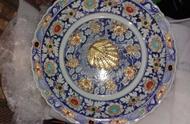
青花瓷(blue and white porcelain),又称白地青花瓷,常简称青花,是中国瓷器的主流品种之一,属釉下彩瓷。青花瓷是用含氧化钴的钴矿为原料,在陶瓷坯体上描绘纹饰,再罩上一层透明釉,经高温还原焰一次烧成。钴料烧成后呈蓝色,具有着色力强、发色鲜艳、烧成率高、呈色稳定的特点。原始青花瓷于唐宋已见端倪,成熟的青花瓷则出现在元代景德镇的湖田窑。明代青花成为瓷器的主流。清康熙时发展到了顶峰。明清时期,还创烧了青花五彩、孔雀绿釉青花、豆青釉青花、青花红彩、黄地青花、哥釉青花等衍生品种。
藏品介绍
中文名称:镶金孔雀开屏青花龙纹花口盘
英文名称:Gold-plated peacock with blue and white dragon-shaped mouth plate
类别:瓷器
规格:一件
品相:美品

青花盘面用黄金镶嵌内外三圈,以孔雀开屏为中心,用金丝鏨刻成花纹镶嵌其上,周围做成宝石底座,再镶嵌其上,用专用钳具进行固定,使整个青花盘富丽堂皇,金光闪耀,极具观赏性。

这件青花盘内外三圈,外圈水波纹,青花出现晕散,吃进胎骨,中圈绘折枝花卉文,以留白方式展现,更为精致,内圈火龙纹,可见山字形的火焰纹,龙是皇上的象征,代表着君王,可见镶嵌宝石主要为绿松石,红珊瑚,红绿相间美的动人心魄。

底部周圈画孔雀开屏纹,边缘为波浪形花口,底足氧化发黄,这是由于瓷胎中含有微量铁元素氧化所致,底足出现了明显的棕眼现象,其上盖有海关火漆印,证明这是一件海外回流的精品瓷器,由上镶嵌的黄金珠宝可见是国外贵族喜爱的审美观,目前国家支持国宝回流,有火漆印的藏品不像国内造假严重,遍地假货的现象,海外回流瓷器极少出现仿品的情况,为收藏爱好者关注的重点,此瓷器品相完美,无磕无残具有极高的收藏价值。
青花瓷是能最好表现泼墨山水画的瓷器,这是其它瓷器所做不到的,所以青花瓷最具中国风,最能体现中国山水画艺术的最好载体,china这个单词大家都知道是中国的意思,可是最早这个单词的意思就是瓷器,因为当时中国被称之为瓷器之国,可见我国瓷器的影响之大,已经成为对外的一张艺术名片了,而当时出口瓷最多的就是青花瓷,这件青花瓷开门见老,画工精美,镶嵌宝石无一掉落,极为难得,综上所述是一件十分难得的馆藏级藏品,可谓是千金易得,一宝难求。
青铜镜是一种古老的由青铜所制的使用器物,也是精美的工艺品。目前发现最早的青铜镜,是距今4000年左右齐家文化墓葬中出土,镜面有光泽,镜背中央有一个桥形钮,未施纹饰。据史料记载,自商周时代起,古人就用青铜磨光做镜子,光亮可照人,背面雕有精美纹饰。到战国时已很流行,汉、唐时更加精美。铜镜一般是含锡量较高的青铜铸造。在古代,早的商代是用来祭祀的礼器出现,在春秋战国至秦一般都是王和贵族才能享用,到西汉末期铜镜就慢慢的走向民间,是人们不可缺少的生活用具。它制作精良,形态美观,图纹华丽,铭文丰富,是中国古代青铜艺术文化遗产中的瑰宝。。
藏品介绍
中文名称:战国螭龙葵口青铜镜
英文名称:Bronze mirror of mouth of Dragon chi in warring States Period
类别:杂项
规格:1面
品相:美品

中华文明上下五千年,可以说历史十分的悠久,广阔的土地,丰富的资源。在这悠久的历史中,铜镜长时间的发展着,演变着,在各朝各代都留下不少,不管是种类,数量,乃至形状都是多到惊人,世界上任何一个国家在这个方面都比不过中国。古铜镜以其独特的艺术魅力浓缩文化,鉴证历史,创造财富,陶冶情操,所以成为人们投资收藏的古代艺术品。
近些年“铜镜”一度成为收藏界追捧的宠儿,媒体上炒的沸沸扬扬,动辄上百万,上千万的天价。据了解“铜镜”的收藏价值极高,但是“铜镜”存世量极为稀少,一般古玩市场的多为伪造品。如今“铜镜”价格一路狂飚,导致伪造情况越演越烈。

螭是古代神话传说中的一种龙。螭龙寓意美好,吉祥,招财,也寓意男女的感情。《汉书·司马相如传上》:“于是蛟龙赤螭。”颜师古注:“文颖曰:‘龙子为螭。’张揖曰:‘赤螭,雌龙也。’如淳曰:‘蠄,山神也。’”《广雅》云:“有角曰虬,无角曰螭。”
螭龙被中国民间认为寓意美好,吉祥,也寓意男女的感情。
战国时期,蟠螭纹头部的特征是圆眼、大鼻、眼尾稍有细长线。双线细眉,上线很浅很细,往往不易看出。下线明显,猫耳,大多数耳朵方圆。腿部线条弯曲,脚爪往往向上翘起,用曲折的弧形线,尽情地把关节主要活络胛骨都表现出来。蟠螭身上的附带纹饰一般都用阴线勾勒,其中有弯茄形滴水状的阴刻纹,是战国时代的首创。在这种纹饰中又有一道、多道的细划线,尾部有阴刻线呈绞丝状,使整个蟠螭纹显得活泼有趣,这种绞丝尾也是战国首创,往往是两道阴刻线一组,也有一道一道的。而汉代蟠螭纹眉向上竖,并往内钩,眉毛浅,若隐若现,柔中有刚。
元明时代仿汉代蟠螭,眉毛深、粗、生硬,不像汉代细致生动。鼻梁中出现细线划纹,汉代蟠螭形身体和战国的大同小异,但是出现了有两个卷云纹所组成的尾巴。

此藏品为螭龙青铜镜。铜镜一般是含锡量较高的青铜铸造。在古代,最早的商代是用来祭祀的礼器出现,在春秋战国至秦一般都是王和贵族才能享用,到西汉末期铜镜就慢慢的走向民间,是人们不可缺少的生活用具。它制作精良,形态美观,图纹华丽,铭文丰富,是中国古代青铜艺术文化遗产中的瑰宝。目前,古铜镜买家大多看重的还是古代铜镜的审美价值,即艺术性。专家认为,铜镜在考古学研究中占有很重要的地位,各个历史时期的铜镜有着各自的特征,因此,铜镜对于古代墓葬的断代是重要的标准器之一。此藏品螭龙青铜镜,整体品相完好,工艺精良,质地厚重。藏品为不可多得的收藏重器、战国青铜镜极为罕见、有巨大的投资价值及收藏价值。
青铜镜是一种古老的由青铜所制的使用器物,也是精美的工艺品。发现最早的青铜镜,是距今4000年左右齐家文化墓葬中出土,直径6厘米,厚0.3厘米,镜面有光泽,镜背中央有一个桥形钮,未施纹饰。
据史料记载,自商周时代起,古人就用青铜磨光做镜子,光亮可照人,背面雕有精美纹饰。到战国时已很流行,汉、唐时更加精美。
藏品介绍
中文名称:十二生肖青铜镜
英文名称:Twelve living xiao bronze mirror
规格:直径
类别:杂项
品相:美品

铜镜整体为三圈。这在铜镜中极为罕见,最外圈环绕的是十二星像图以及八卦图围绕,对应的十二生肖:鼠牛虎兔龙蛇马羊猴鸡狗猪。中圈一圆钮方便固定与镜座之上:表面有明显的包浆,凹陷处有氧化铜呈现的青灰色锈迹,也就是青铜器最典型的锈色,且锈色层次分明,深浅不一,不同的位置有不同的表现,锈迹放大化有颗粒感,是极为难得的开门老铜镜。
八卦,见于《周易·系辞下》云:“古者包牺氏之王天下也,仰则观象于天,俯则观法于地;观鸟兽之文与地之宜;近取诸身,远取诸物,于是始作八卦,以通神明之德,以类万物之情。” 八卦生自太极、两仪、四象中,“四象生八卦”。
它也是中国古老文化的深奥概是一套用三组阴阳组成的形而上的哲学符号。其深邃的哲理解释自然、社会现象。八卦成列,象在其中矣;因而重之,爻在其中矣;刚柔相推,变在其中矣;系辞焉而命之,动在其中矣。八卦成列的基础是易象,重卦的基础则在于爻变,“爻在其中矣”便是易道周流的内在动因。八卦表示事物自身变化的阴阳系统,用“一”代表阳,用“- -”代表阴,用这两种符号,按照大自然的阴阳变化平行组合,组成八种不同形式,叫做八卦。八卦其实是最早的文字表述符号。

铜镜表面有明显的朱砂锈,颜色偏红,有少部分绿绣,具有红斑绿绣的铜镜为开门真品,从镜面看没有任何裂纹,品相完美,实属难得。

它在中国文化中与“阴阳五行”一样用来推演世界空间时间各类事物关系的工具。每一卦形代表一定的事物。乾代表天,坤代表地,巽(xùn)代表风,震代表雷,坎代表水,离代表火,艮(gèn)代表山,兑代表泽。八卦就像八只无限无形的大口袋,把宇宙中万事万物都装进去了,八卦互相搭配又变成六十四卦,用来象征各种自然现象和人事现象,基于当今社会人事物繁多;八卦在中医里指围绕掌心周围八个部位的总称。八卦代表易学文化,渗透在东亚文化的各个领域。
这枚铜镜包浆自然,底光柔和,所谓包浆是自然形成的氧化层,也有人为手盘包浆,两者不同,但同时都有保护藏品的功能,有如给铜镜镀上一层保护膜,使得铜镜不再氧化,便于收藏传世,如果觉得铜镜脏,可以用清水洗,再用棉布擦干,不要破坏包浆,破坏了包浆就相当于破坏了保护层,更重要的是包浆是鉴定新老铜镜最简单有效的方法。细看这枚铜镜品相完美,没有磕缺,损毁,变形等是不可多的收藏级铜镜,十二生肖八卦阳刻纹,整体画面形式玉璧,古人认为天是圆的,以玉璧礼天,发展到后期,以铜镜为天,中置十二生肖八卦可祛邪避恶,保平安,是一件难得的宝镜建议收藏,传世。
英文翻译:Blue and white porcelain, also known as white blue and white porcelain, is often referred to as blue and white porcelain. It is one of the mainstream varieties of Chinese porcelain, and belongs to underglaze color porcelain. Blue and white porcelain is made of cobalt ore containing cobalt oxide as raw material, which is decorated on the ceramic body, then covered with a layer of transparent glaze, and fired by a high temperature reduction flame. Cobalt material is blue after burning, with strong coloring, bright hair color, high burning rate and color stability. The original blue and white porcelain appeared in The Tang and Song dynasties, while the mature blue and white porcelain appeared in the Hutian kiln of Jingdezhen in the Yuan Dynasty. The blue and white of Ming Dynasty became the mainstream of porcelain. It reached its peak during the Kangxi period of qing Dynasty. In the Ming and Qing Dynasties, it also created blue-and-white colorful, malachite-green glaze blue-and-white, soya-green glaze blue-and-white, blue-and-white red, yellow-ground blue-and-white, blue-and-white and other derivative varieties.
The collection is introduced
Chinese name: gold-plated peacock with blue and white dragon pattern mouth plate
Gold-plated peacock with Blue and White Dragon-shaped Mouth Plate
Category: Porcelain
Specification: one piece
Appearance: Beautiful
The blue and white disk is inlaid with gold inside and outside three circles, with peacock spreading screen as the center, inlaid with gold silk chisel into the pattern, around the jewel base, and then inlaid on it, fixed with special pliers, so that the whole blue and white disk is magnificent, shining gold, highly ornamental.
Inside and outside the QingHuaPan three laps, outer water ripple, appear blue and white halo, eating into the fetal bone, and the circle painted folding branches, flowers in white space, more delicate, inner ring dragon grain, visible mountain glyph flame grain, the dragon is the symbol of the emperor, representing the Kings, visible metagems are mainly turquoise, red coral, red and green beauty is fascinating.
Circumferential painting at the bottom of the peacock train lines, edge for wavy flower mouth, bottom of foot oxide yellow, this is due to the porcelain body contains traces of iron oxide, bottom of foot there is an obvious phenomenon of brown eyes, it carries the customs sealing-wax stamp.it means first, prove that this is an overseas return fine porcelain, gold jewelry inlaid by the visible is the aesthetic view of foreign nobility, at present the country to support national treasure back, have a sealing-wax stamp.it means first collection unlike domestic fraud is serious, and the phenomenon of fake goods, abroad circumfluence porcelain replicas, seldom appears as the concerns of the collector, the perfect porcelain product, without cracking residue has a very high collection value.
Blue and white porcelain is the best performance splash-ink landscape painting of China, it is the other porcelain can't do, so most Chinese wind of blue and white porcelain, most can reflect the best carrier of Chinese landscape painting art, China this word is the meaning of the Chinese is known to all, but the meaning of this word is the earliest porcelain, because the country is referred to as Chinese porcelain, is our country the influence of China, has become a foreign art card, at a time when export porcelain is blue and white porcelain, the blue and white porcelain to open the door to me, painters, fine gems that none falling, is extremely rare, above all is a very rare class library collection, It can be said that a treasure is easy to get, a treasure is hard to find.
Bronze mirror is an ancient tool made of bronze. It is also an exquisite handicraft. The earliest bronze mirror found so far was unearthed from a tomb of The Qijia Culture around 4000 years ago. The mirror has a shiny mirror, and there is a bridge knob in the middle of the back of the mirror, which is not decorated. According to historical records, since the Shang and Zhou dynasties, ancient people used bronze to polish mirrors, which were bright enough to shine on people. By the Warring States period, it was very popular, and by the Han and Tang dynasties, it was more exquisite. Bronze mirrors are usually cast in bronze with a high tin content. In ancient times, the early Shang Dynasty was used for sacrificial vessels, which were generally enjoyed by the Kings and nobles from the Spring and Autumn Period and warring States period to the Qin Dynasty. By the end of the Western Han Dynasty, bronze mirrors were gradually becoming popular among the people and became an indispensable tool for people's life. It is well made, beautiful in shape, gorgeous in pattern and rich in inscriptions, and is the treasure of the ancient Chinese bronze art and culture heritage.
The collection is introduced
Chinese name: Bronze mirror of mouth of Dragon Chi in the Warring States Period
Bronze Mirror of Mouth of Dragon Chi in Warring States Period
Category: Miscellaneous
Specification: 1 side
Appearance: Beautiful
The Chinese civilization has been going up and down for five thousand years, so to speak, with a very long history, vast land and rich resources. In this long history, the bronze mirror has been developing and evolving for a long time, and has left quite a few in different dynasties and generations. No country in the world can match China in this respect, no matter in the variety, number or even shape. With its unique artistic charm, the ancient bronze mirror concentrates culture, testifies history, creates wealth and edifies sentiment, so it has become the ancient artwork that people invest and collect.
In recent years, "bronze mirror" once became the favorite of collectors, the media speculation, often millions, tens of millions of dollars. It is understood that the collection value of "bronze mirrors" is very high, but the number of "bronze mirrors" in the world is very rare, the general antique market is mostly forged. Now the price of the mirror has soared, leading to more forgery.
Li is a dragon in ancient myth and legend. Li dragon implied beauty, good luck, wealth, also implied feelings of men and women. In the Book of the Han Dynasty, The Legend of Sima Xiangru: "Then dragons are red chi." Yan Shiku noted, "Wen Ying said, 'The dragon is chi. Zhang Yi said, "Red chi, female. "Such as chun yue:" 蠄, mountain god also. "In The Book Guang Ya," Every day is qiu qiu with horns, and chi chi without them."
Chi Dragon is considered by Chinese folk to have beautiful and auspicious meanings, and to symbolize the feelings of men and women.
In the Warring States Period, the characteristics of dragon head are round eyes, big nose and slightly long tail. Double line thin eyebrow, the line is very shallow very thin, often not easy to see. Obvious referrals, cat ears, most ears around. Leg ministry line is bent, crural claw often becomes warped up, with tortuous arc line, show to the top of one's bent joint main active scapula bone comes out. The adornment on cochi body generally USES shade line to draw the outline, among them has the shade carving pattern of the shape of eggplant drop, it is the creation of the Warring States period. In this pattern, there is a line, many lines, the tail has a Yin carving line is twisted, so that the whole dragon design is lively and interesting, this kind of Hank tail is also the first of the Warring States, often is a group of two Yin carving lines, but also a. And Han Dynasty coasting grain eyebrow up vertical, and to the hook, eyebrow shallow, if concealed, soft in have firm.
In the Yuan and Ming Dynasties, imitation of Han Codragon-shaped brows is deep, coarse and rigid, unlike that of the Han Dynasty, which is meticulous and vivid. Thin lines are drawn in the bridge of the nose. The body of han Dynasty coiled-dragon pattern is similar to that of the Warring States, but it has a tail composed of two rolls of moire.
This collection is bronze mirror of dragon chi. Bronze mirrors are usually cast in bronze with a high tin content. In ancient times, the earliest sacrificial vessels appeared in the Shang Dynasty. From the Spring and Autumn Period and warring States period to the Qin Dynasty, they were generally enjoyed by the Kings and nobles. By the end of the Western Han Dynasty, bronze mirrors were gradually becoming popular among the people and became an indispensable tool for people's life. It is well made, beautiful in shape, gorgeous in pattern and rich in inscriptions, and is the treasure of the ancient Chinese bronze art and culture heritage. At present, the ancient bronze mirror buyers mostly value the ancient bronze mirror's aesthetic value, namely the artistic value. Experts believe that bronze mirrors play a very important role in archaeological research. Bronze mirrors in various historical periods have their own characteristics. Therefore, bronze mirrors are one of the important standard tools for the dating of ancient tombs. This collection dragong bronze mirror, the whole piece good, fine workmanship, thick texture. The collection is a rare collection of heavy objects, the Warring States period bronze mirror is very rare, has great investment value and collection value.
Bronze mirror is an ancient tool made of bronze. It is also an exquisite handicraft. The earliest bronze mirror found was unearthed from a tomb of the Qijia Culture 4,000 years ago. It has a diameter of 6 centimeters and a thickness of 0.3 centimeters. It has a shiny mirror and a bridge knob in the center of the back, which is not decorated.
According to historical records, since the Shang and Zhou dynasties, ancient people used bronze to polish mirrors, which were bright enough to shine on people. By the Warring States period, it was very popular, and by the Han and Tang dynasties, it was more exquisite.
The collection is introduced
Chinese name: 12 students xiao Qing bronze mirror
Twelve Living Xiao Bronze Mirror
Specification: Diameter
Category: Miscellaneous
Appearance: Beautiful
The bronze mirror as a whole has three circles. This is extremely rare in a bronze mirror. The outer ring around it is a picture of the 12 stars and the eight diagrams, representing the Chinese zodiac: rat, ox, tiger, rabbit, dragon, snake, horse, sheep, monkey, rooster, dog, pig. A round button in the middle ring is convenient for fixing on the mirror seat: there is obvious coating paste on the surface, and there is the bluish gray rust stain of copper oxide in the depression, which is the most typical rust color of bronze ware. Besides, the rust color has distinct layers, different shades, and different positions have different manifestations. The rust is granulated when it is released, making it a rare old bronze mirror.
The eight Trigrams can be found in the Book of Zhouyi: "The ancient perched a king in the world, looking up at the sky and looking down at the earth; Birds and beasts of the text and the appropriate place; Take all the body near, take all the things far away, then began to do the eight trigrams, to the virtue of the gods, like the feelings of all things. The eight diagrams are born in Tai Chi, the two rituals and the four elephants, "the four elephants are the eight diagrams".
It is also the profundity of ancient Chinese culture. It is a metaphysical philosophical symbol composed of three groups of Yin and Yang. His profound philosophy explains natural and social phenomena. The eight diagrams become a column, as in which; Therefore, the yao is among them; And when the hardness and softness are pushed together, they become among them; It is in the midst of them that the word of god moves. The basis of the tabulation of the eight diagrams is the yi image, while the basis of the reinterpretation of the hexagrams is the distortion of the lines. The eight trigrams represent the Yin-yang system of the changes of things themselves, with "one" for Yang and "--" for Yin. With these two symbols, eight different forms are formed according to the parallel combination of the Yin and Yang changes of nature, which are called the eight trigrams. The eight Trigrams are actually the earliest written symbols.
The surface of the copper mirror has obvious cinnabar rust, color slant red, a small part of green embroidery, with red spot green embroidery of the copper mirror for the door genuine products, from the mirror to see no cracks, perfect, it is rare.
In Chinese culture, it is the same as "Yin Yang and Five elements", which are used to deduce the relationship between various things in world space and time. Each hexagram represents a certain thing. Dry represents the sky; kun represents the earth; Xun stands for wind; xun stands for thunder; Xun stands for water; Xun stands for fire; Gen stands for gen, mountains; and Xun stands for water. The eight trigrams are like eight infinite invisible pockets, which contain everything in the universe. The eight trigrams are matched with each other and become the 64 hexagrams, which are used to symbolize various natural phenomena and human phenomena. The eight trigrams in Traditional Chinese medicine refer to the eight parts around the palm. The eight diagrams represent the Yi learning culture, which permeates all fields of East Asian culture.
This bronze patina natural, soft light, the so-called wrapped slurry is a natural formation of the oxide layer, also some people to hand wrapped slurry, the two different, but at the same time have to protect the function of collection, as to the bronze mirror plating on a layer of protective film, made the bronze mirror no longer oxidation, facilitate collection handed down from ancient times, if think bronze mirror is dirty, can wash, reoccupy cloth wipe, do not destroy the wrapped slurry, destroyed the wrapped slurry is equivalent to destroy the protective layer, more important is the wrapped slurry is the most simple and effective method for identification of new and old bronze mirror. Scan this bronze mirror quality perfect, no ke is missing, damaged, deformation, etc are not more collection of bronze mirror, zodiac gossip Yang groove, the overall picture form jade, ancient people think day was round, with jade ritual day, development to late, bronze mirror, for days, Chinese zodiac of gossip can eliminate pathogenic avoid evil, be safe, is a rare collection of mirrors advice, handed down from ancient times.
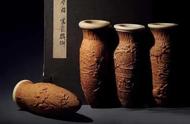

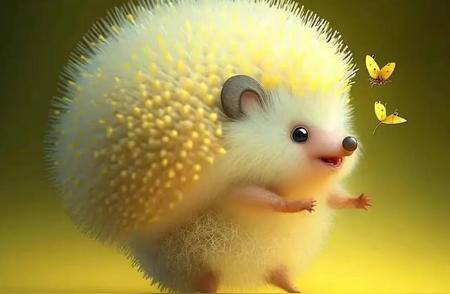







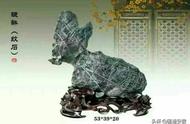
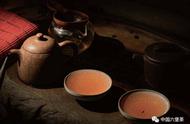








 鲁公网安备37020202370217号
鲁公网安备37020202370217号